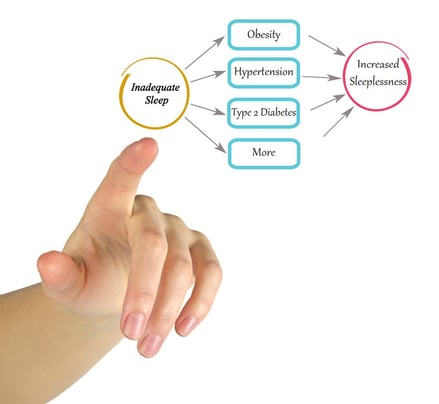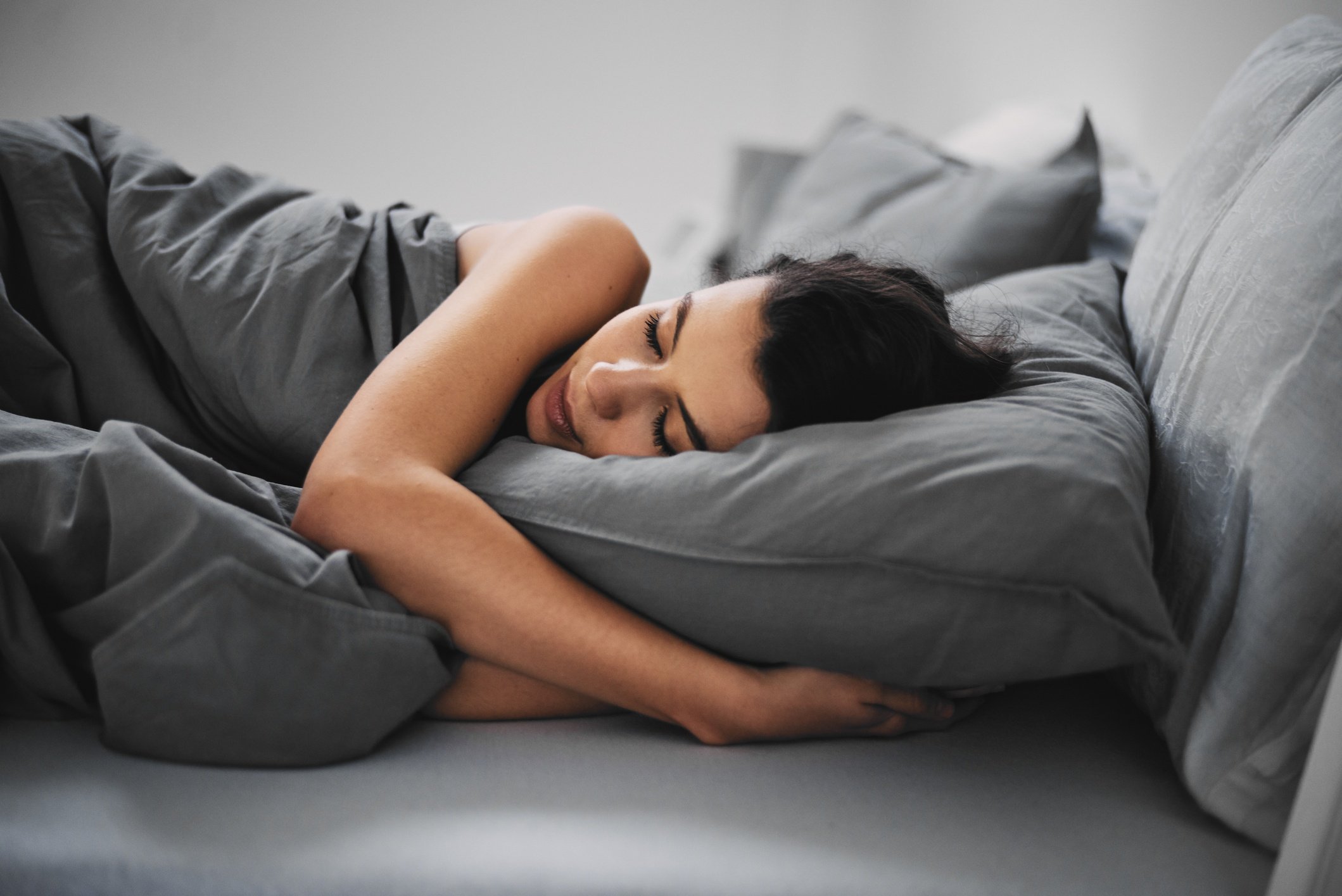Healthy Living: Why Sleep Matters And 5 Ways Steam May Help
Lack of sleep can negatively impact your health in many ways. If you’re having trouble getting your 7-9 hours per night, it might be time you explore other options including steam.
We are in the midst of a national sleep crisis. Our distracted, 24/7 lifestyles are keeping us from shutting down long enough to restore our bodies and minds through recuperative rest. Not only are we not performing at our best from lack of sleep, we’re risking our overall physical and mental wellness.
The sleep-deprived have plenty of company. According to research by the National Sleep Foundation, 35% of Americans say that their sleep quality is insufficient or “poor” on a regular basis, and a snap study found that 45% of Americans admitted that they suffered from inadequate sleep at least once in a typical one-week period.

The costs of inadequate sleep add up to much more than slow wits and heavy eyelids. It’s a serious health problem. The Centers for Disease Control (CDC) says that “short” sleepers, those who get less than seven hours of sleep in a 24-hour period, were more likely to “report 10 chronic health conditions” compared to those who regularly achieved seven or more hours of sleep per day. These health problems include obesity, hypertension, type 2 diabetes, and other maladies. Worse, chronic health conditions lead to increased sleeplessness, creating a vicious cycle, where lack of sleep and poor health feed off each other.
This national sleep crisis is no secret. We know we’re not sleeping, and we’re desperate for help. Of those people who search for health information online, 43% seek a solution for insomnia or other sleep-related issues. The CDC reports that nine million Americans take prescription sleep aids. Then there are the over-the-counter nutritional supplements, specialized bedding, and other products that we buy to get some decent shut-eye. In all, American’s spend $32.4 billion on sleep remedies per year.
Five Ways Steam MAY Improve Your Sleep
Sleep experts recommend a number of simple measures that can help you get your ZZZs. Abstaining from caffeine and alcohol late in the day, adopting a regular nighttime routine, and avoiding computer and smartphone screen time an hour before bed are common suggestions.
While these common-sense lifestyle changes are a great start in addressing sleep disorders, there are other natural therapies for improving sleep that many people overlook. One possible solution is steam therapy. Simply spending time in a quality steam room may help you power down, relax, and provide other biological benefits to help you get the sleep you need.
It may seem counterintuitive that immersing your body into the high-humidity environment of a steam room could possibly help you sleep at night, but that’s what researchers have discovered. The controlled, distraction-free environment of a steam room can help facilitate calm and relaxation. And the heat itself may have surprising benefits. One study on elderly subjects suffering from insomnia discovered that increasing body temperature helped enhance quality of sleep and “quickness of falling asleep.”
Here are some of the other ways that steam therapy can contribute to better sleep.
1) Stress Relief
This is where it all begins. Stress and its attendant effects do a number on multiple physiological systems in the body. Stress hormones, such as cortisol, negatively affect immunity, cardiovascular function, blood pressure, cognitive function, and more. Cortisol, also known as the “fight-or-flight” hormone, can increase dramatically just on your commute home. (Road rage is particularly bad for your overall wellness.)
Steam rooms may be a great way to de-stress after a difficult day. It starts with the tranquil environment of a steam session that clears the mind and blocks out distractions. This calming effect can be enhanced by soothing music or aromatherapy. Some say that a session in a steam room is like getting a relaxing massage inside and outside the body.
But besides the obvious benefits of spending peaceful “me” time in a pleasurable space, steam therapy just might help release endorphins, hormones that interact with the body’s opiate receptors. Endorphins can have a pleasurable effect, and help reduce pain and discomfort.
Research also shows that steam therapy may increase release of aldosterone, a hormone that can help lower blood pressure and enhance relaxation. These biochemical effects help recalibrate your body and calm you down after a crazy day.
2) Improved Breathing
Breathing disorders during sleep are one of the main causes of poor sleep quality. Steam rooms won’t have an effect on the structure of your breathing anatomy, of course, but steam therapy may help clear out your lungs and sinuses, helping you breathe better during sleep, and this could help you get better sleep.
Steam can be a natural expectorant, and may help clear up the entire respiratory system of phlegm and mucus. Research has discovered that steam therapy has the ability to assist in decreasing the symptoms of bronchitis and asthma in both adults and children. And an Indian study found that in some people steam may help reduce acute lower respiratory tract discomfort.
You know how a stuffy nose or a persistent cough can keep you up at night. A session in a steam room may help relieve you of those symptoms and help you get some quality shut-eye.
3) Enhanced Mood
Depression and insomnia are very much linked, and those suffering from mood disorders often find themselves too troubled to sleep. Research has found that heat therapy may help increase levels of the neurochemical serotonin in the brain. Serotonin is the “feel good” hormone. Heat therapy may also help increase melatonin, a neurohormone that promotes relaxation and sleep.
A different study in the JAMA Psychiatry found that sessions in steam rooms may help elevate mood. This was after subjects engaged in “whole-body heating,” leading the researchers to conclude: “Whole-body hyperthermia holds promise as a safe, rapid-acting, mood enhancing modality”.
4) Improved Circulation
Better circulation can help you feel more calm by promoting better regulation of your heart rate. Increased vasodilation (blood flow) helps open up arteries and veins, increasing the supply of oxygen, neurohormones, and other nutrients to the brain. This helps you achieve a deeper sleep, which is crucial for overall health.
According to experts, the blood flow out of the heart “increases by two or more times after a 10-to-15-minute steam room exposure.” This may have a lasting effect on circulation that could help you get the deep sleep your body and brain needs.
Which brings us to…
5) POSSIBLE Reduction in Inflammation
Pain and inflammation can plague you any time of the day, but it’s worse when you’re trying to eliminate distractions as you try to fall asleep. Inflammation is also a root cause of a number of conditions, so overall wellness depends on lessening inflammation whenever possible.
Research has shown that systemic thermal therapy has been shown in some people to decrease inflammatory responce mechanisms and reduce the feeling of pain. This makes sense if you’ve ever put a heat pack on sore muscles.
Some fitness experts swear by the steam room’s ability to potentially relieve discomfort and stiffness after workouts. Athletes are increasingly choosing steam therapy as a regular part of their post-workout regimen due to steam’s possible ability to help damaged tissue after intense exercise. Heat therapy has shown the possible ability to protect against oxidative stress in muscular tissue.
All in all, spending time in a steam room just feels damn good. It revives you even as it contributes to your overall physical and psychological wellness in more complex ways. The healthier your overall wellness profile, the better you’ll sleep.
Make Steam Part of Your Sleep Routine
If you really want to increase your chances of improving your quality of sleep, consider adding steam to your nighttime routine. Sleep experts say that having a regular routine in general before bedtime helps immeasurably in creating a better sleep environment, so integrating steam therapy into your nightly “power-down” is a true win-win.
Steam rooms and steam showers are a controlled environment with minimal distractions, and you won’t be tempted to bring your smartphone into a steam room (we certainly don’t advise it). As noted earlier, avoiding electronic screens on smartphones and computers an hour before bedtime is another common suggestion by sleep experts, though it’s often ignored.
One more thing: We know a steam room can be heavenly tranquil, but don’t become too relaxed and fall asleep in the steam room. Limit your steam room exposure to 10-15 minutes, especially if you’re not used to steam therapy. As you become acclimated over time, you can prolong it to 20 minutes, but don’t exceed that in single sitting.
That’s a short amount of time for the amazing benefits you get from steam therapy. Time your steam room session right, and you’ll never again worry about getting your 7-9 hours of great sleep per night.

 SEARCH
SEARCH
 FIND A DEALER
FIND A DEALER








